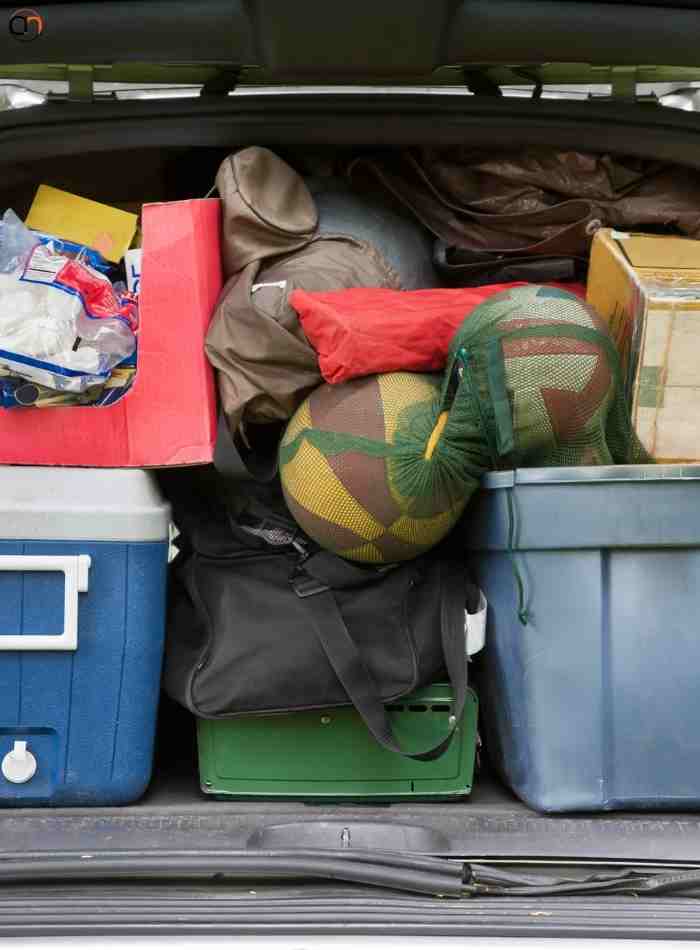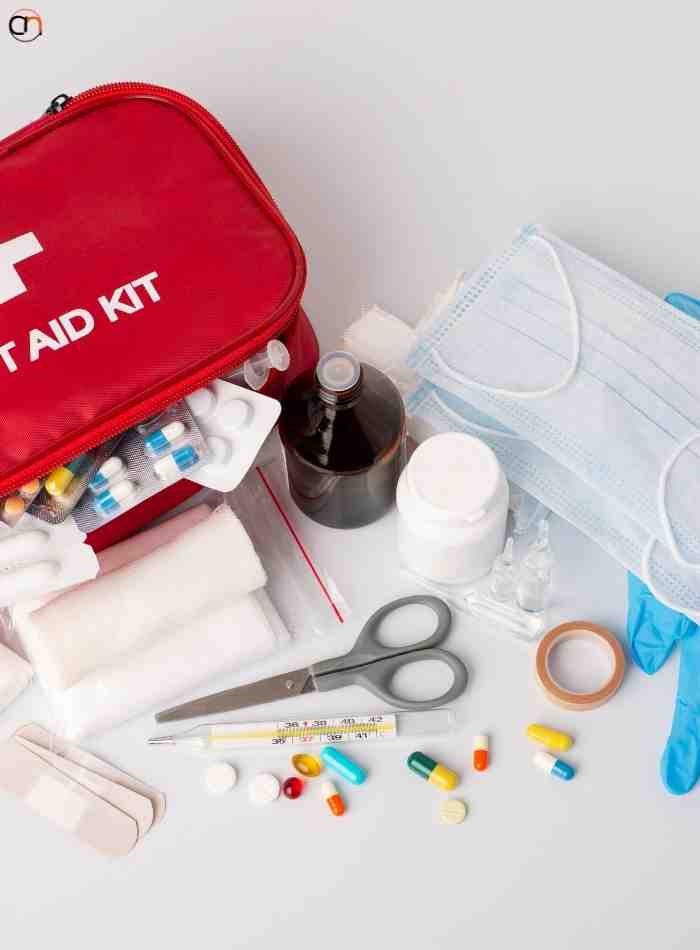Whether you’re heading out for a weekend of camping with friends or embarking on a longer wilderness adventure, the key to a successful trip is good preparation.
The right camping gear will not only ensure your safety and comfort but also help you enjoy nature without worrying about the little things. From shelter and food to clothing and entertainment, packing for a camping trip involves careful thought and planning.
In this post, we’ll guide you through the ultimate Camp Packing List to help you feel organized, prepared, and ready for your next outdoor adventure.
We’ve broken it down into categories, covering everything you need to pack for a successful and memorable camping experience.
30 camp packing list:
This 30-item camping packing list includes everything you need for a comfortable and safe outdoor adventure. From shelter and sleeping gear to cooking supplies and personal essentials, it ensures you’re fully prepared for your next camping trip.
1. Shelter and Sleeping Gear
The foundation of your camping experience starts with a good night’s sleep and protection from the elements. These items are essential to create a comfortable and safe environment at the campsite.
Tent
Your tent is the first thing you’ll need when setting up camp. Make sure it’s large enough to fit everyone in your group, plus gear. Some things to consider when choosing a tent include:
-
Size: Choose a tent that fits your group comfortably, with extra room for gear.
-
Weatherproofing: Opt for a tent that can handle the climate you expect, such as one with waterproofing, rain flaps, and adequate ventilation.
-
Ease of Setup: If you’re new to camping, a tent that’s easy to set up will make your life much easier.
Sleeping Bag
A good sleeping bag is crucial for staying warm and comfortable throughout the night. Choose one based on the season and temperature you’ll be camping in:
-
Three-season sleeping bags are perfect for most camping trips.
-
If you’re camping in cold weather, go for a winter sleeping bag that’s rated for lower temperatures.
-
Sleeping pads or air mattresses provide extra cushioning and insulation from the cold ground.
Pillows
While not essential, a camping pillow can add a lot of comfort to your sleeping setup. If you prefer not to bring a pillow, you can use your jacket or a stuff sack filled with clothes as a makeshift pillow.
Tarp or Groundsheet
A groundsheet or tarp will protect your tent floor from dirt, rocks, and moisture, prolonging the life of your tent. It also helps keep your tent floor dry, especially when camping in wet conditions.
2. Cooking and Food Preparation
One of the highlights of camping is cooking outdoors and enjoying meals in the fresh air. Having the right cooking gear is essential for preparing tasty meals and snacks.
Camping Stove or Portable Grill
A portable stove or grill is necessary for cooking meals. If you’re planning to cook over an open fire, check if your campsite allows it, as some areas have fire restrictions. A portable stove is compact and versatile, while a small grill can be a fun way to cook if the campsite permits.
Fuel for Stove or Grill
Make sure to pack the appropriate fuel for your stove or grill, such as propane, butane, or charcoal. Bring extra fuel in case of emergencies.
Cookware
Basic cooking supplies include:
-
Pots and pans for boiling, frying, or stewing.
-
Camping utensils like a spatula, tongs, and a cooking spoon.
-
Collapsible bowls or plates, and lightweight cutlery.
-
Camping mugs for hot drinks like coffee or tea.
Cooler and Ice Packs
If you’re bringing perishable foods, a cooler is essential for keeping things cold. Be sure to pack ice packs or block ice to ensure your food stays fresh.
Food Storage
To keep critters out of your food, use airtight containers or heavy-duty bags to store food. Consider packing ziplock bags, dry food containers, or even bear-proof canisters if you’re camping in an area with wildlife.
Cleaning Supplies
You’ll need some basic cleaning supplies for cooking and eating:
-
Biodegradable soap to wash dishes and utensils.
-
Sponge or dishcloth for scrubbing.
-
Trash bags to dispose of waste, as well as compostable bags for food scraps.
-
Hand sanitizer for cleaning hands before meals.
3. Clothing for the Outdoors
Weather can change unexpectedly when you’re camping, so it’s essential to bring layers of clothing that will keep you comfortable in various conditions. Your packing list should cover everything from the sunniest days to the coldest nights.
Base Layers
Start with moisture-wicking base layers that will keep you dry and comfortable. A good base layer should include:
-
Long-sleeve shirts or thermal tops for cooler weather.
-
Base layer pants or leggings to provide warmth on chilly nights.
Middle Layers
These layers provide insulation. Consider packing:
-
Fleece jackets, down jackets, or synthetic jackets for warmth.
-
Lightweight sweaters that are easy to pack and versatile.
Outer Layers
You’ll need protection from wind, rain, and the sun. Don’t forget to bring:
-
Waterproof jackets or rain ponchos to keep you dry during sudden showers.
-
Windbreakers or softshell jackets for added protection in windy conditions.
-
Hats for sun protection or warmth, depending on the weather.
Pants and Shorts
Pack a combination of pants and shorts depending on the season. Choose pants that are breathable and comfortable for hiking. Consider quick-drying pants that are ideal for water-related activities.
Socks and Undergarments
Don’t skimp on moisture-wicking socks and underwear. Having several pairs of socks is crucial since wet socks can lead to discomfort or blisters. Wool socks are a great choice as they keep your feet warm even when wet.
Hats, Gloves, and Scarves
For colder weather, bring insulated gloves and a beanie to keep warm. Even in warmer months, a hat can protect you from the sun.
Footwear
Your choice of footwear will depend on the activities you plan to do:
-
Sturdy hiking boots for trekking on rugged terrain.
-
Trail shoes or sandals for lighter trails or camp relaxation.
-
Water shoes if you plan on wading through streams or lakes.
4. Safety and Navigation
Staying safe is the top priority when camping. Pack the following safety items to keep yourself and others protected.
First Aid Kit
A well-stocked first aid kit is essential. Include items such as bandages, antiseptic wipes, gauze, tweezers, and any personal medications. Don’t forget items like insect repellent and sunscreen.
Headlamp or Flashlight
A headlamp is essential for hands-free lighting when setting up camp at night. A flashlight with extra batteries is also a great backup.
Map and Compass
While a GPS device or smartphone can help with navigation, having a physical map and compass is crucial in case technology fails. Learn basic navigation skills, as they are invaluable in remote areas.
Multitool or Knife
A multitool or pocket knife can be used for a wide variety of tasks, from food prep to setting up camp. It’s a lightweight and essential tool for outdoor activities.
Firestarter
Even if your campsite has a fire ring, it’s always a good idea to bring matches, lighters, and firestarter cubes to ensure you can build a fire, especially in damp conditions.
5. Personal Care and Hygiene
Staying clean and comfortable is important during your camping trip. Don’t forget these essential personal care items.
Toiletries
Basic toiletries include:
-
Toothbrush and toothpaste.
-
Biodegradable soap and a small towel.
-
Toilet paper and sanitation wipes for cleaning up when there are no facilities available.
-
Hand sanitizer to clean your hands after bathroom breaks.
Shower and Bathing
If your campsite has a shower, bring quick-drying towels and camping soap. For campsites without showers, you can opt for wet wipes for a quick clean-up.
Sunscreen and Bug Repellent
Sunscreen and bug repellent are essential for protecting your skin from UV rays and insect bites. Be sure to choose reef-safe sunscreen if you plan on swimming in lakes or rivers.
6. Extras for Comfort and Entertainment
Camping isn’t all about survival—it’s also about enjoying the outdoors and relaxing. These extra items can make your camping trip more enjoyable.
Camping Chairs
Comfortable camping chairs make relaxing around the campfire or at the campsite more enjoyable. Look for lightweight, collapsible options that are easy to carry.
Books or Journals
If you enjoy reading or journaling, bring along a book or a notebook for documenting your experiences. This can be a great way to relax during downtime.
Music or Entertainment
A portable speaker (with a waterproof case) is perfect for playing soft music around the campfire, but always be mindful of others in the area. For entertainment, consider games like cards or a frisbee.
Camera or GoPro
Capture the memories of your trip with a camera or GoPro to take photos or videos of your hiking, fishing, and campfire moments.
7. Food and Snacks
When it comes to meals, a camping trip offers the opportunity to try simple yet delicious food options.
Easy-to-Prepare Meals
Consider packing meals that are quick and easy to prepare, such as:
-
Instant oatmeal for breakfast.
-
Canned soups or stews for lunch or dinner.
-
Dehydrated meals are perfect for lightweight and hassle-free cooking.
Snacks
Pack easy-to-carry snacks like:
-
Granola bars
-
Trail mix
-
Fruit
Campfire Food
If you’re making campfire meals, don’t forget marshmallows, hot dogs, or skewers for roasting.
Last Call:
Packing for a camping trip can be overwhelming, but with the right gear, you’ll be set for a comfortable, enjoyable, and safe outdoor experience.
Whether you’re a beginner or a seasoned camper, this comprehensive packing list covers everything from shelter to entertainment, ensuring you’re fully prepared for whatever the wilderness throws your way. Happy camping!
Find more: 30 Beach Packing List
FAQs:
Q. What should I pack for a camping trip?
Essentials include a tent, sleeping bag, stove, food, clothing for all weather, a first aid kit, flashlight, and toiletries.
Q. What type of tent should I bring?
Choose a tent based on the number of people, weather conditions, and ease of setup. A four-season tent is ideal for harsh weather, while a three-season tent is perfect for moderate conditions.
Q. How do I stay warm while camping?
Pack warm layers, a sleeping bag rated for cold temperatures, and a sleeping pad for insulation from the ground.
Q. What food should I bring on a camping trip?
Bring easy-to-prepare meals like instant oatmeal, canned soups, and dehydrated meals. Snacks like granola bars, trail mix, and fruit are great for energy.
Q. How do I keep my food cold?
Use a cooler with ice packs to keep perishable items fresh. If you’re camping for several days, bring extra ice or consider block ice for longer-lasting cooling.




